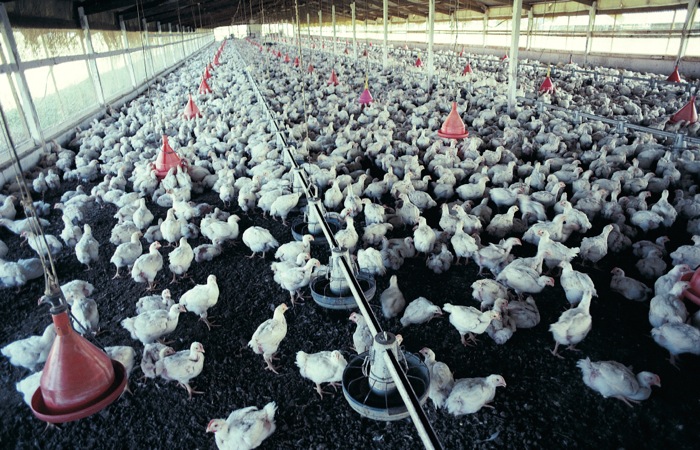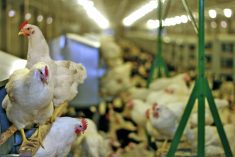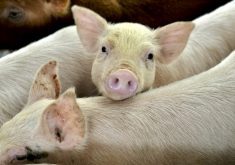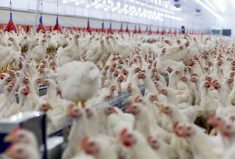An initiative to update the animal care code of practice for poultry is being welcomed by the chair of Alberta Chicken Producers.
“We already have an animal care program in the province that is mandatory for our producers,” said Erna Ference. “All of our farmers are certified and on that program. From what I understand, they will be updating the best practices for the care of their poultry.
“We’re already up to that level with our animal care program and so this will validate what we’re doing as farmers. So that’s a good-news story.”
There are about 230 broiler producers in the province, and all are audited annually to ensure they are meeting the animal care standards, said Ference.
The two biggest changes in her sector in recent years, she said, have been an increase in the space provided to broilers and a ban on adding Category 1 antibiotics (ones that are important in human medicine) to poultry feed. That change went into effect in May.
The federal government announced in late July that it will provide $2.3 million to the Canadian Animal Health Coalition to update poultry codes and further advance best practices for poultry care.
- More from the Alberta Farmer Express: Feds fund poultry code updates and hort programs
The key is that the work will be conducted by scientists and veterinarians, and will be scientifically based — and that’s exactly what producers want, said Ference, who operates Foothills Poultry south of Black Diamond with her husband, Reg Ference.
Read Also
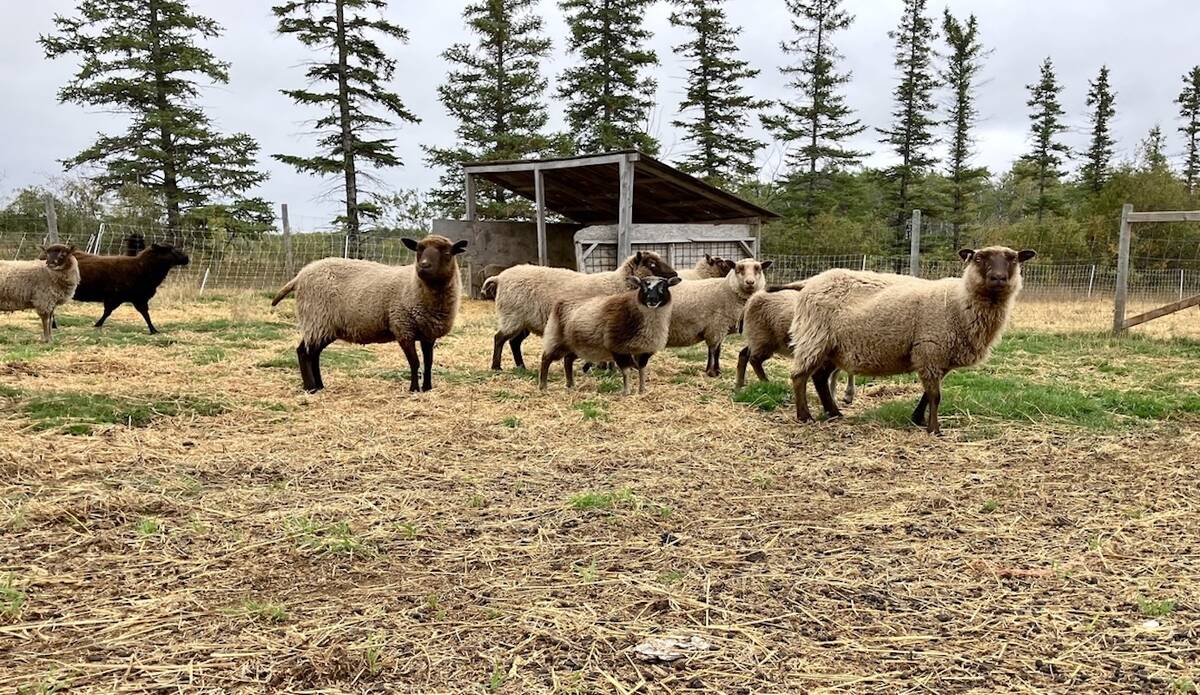
Mosquito-borne virus could be devastating to sheep breeding operations
Cache Valley virus, a mosquito-borne disease that infects small ruminants, could be a devastating hit to small operations.
“It’s amazing the research that has been coming out and how things have changed,” she said. “As new technology becomes available, we would like to adopt it.”
Broiler producers have also learned that improving poultry welfare standards doesn’t have to be an either/or proposition, she said.
For example, the change in density — the amount of space allotted to each chicken — was “a huge one” for her sector because it meant producers had to alter or expand their barns, or build new ones.
Density is measured in kilograms per square metre (kg/m2) and under the former guidelines, producers could have a density as high as 44 kg/m2. That meant they could have 20 market-ready birds (weighing 2.2 kilograms each) per square metre.
The new mandatory standard reduces that to a range of between 31 kg/m2 (about 14 market-ready birds) and a maximum of 38 kg/m2 (just over 17 birds), providing they meet specific standards in regard to mortality, air quality, and other factors depending on conditions and equipment in the barn.
The density change was phased in over three years and all Alberta producers are now compliant. Many are finding an unexpected upside, said Ference.
“I think one thing farmers have found is there has been an unintended consequence, which is that by giving them more space, they are happier and they are growing bigger.”
The Chicken Farmers of Canada has also welcomed a review of the current code and pledged to update its animal care program to incorporate any changes. Revisions to the code are expected to be completed by early 2015.


